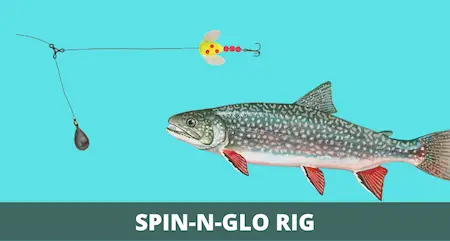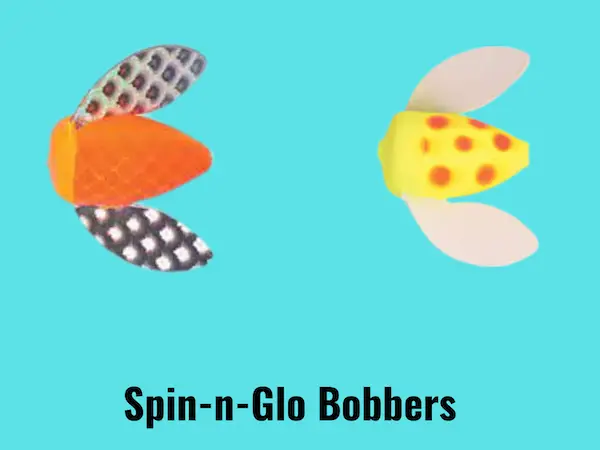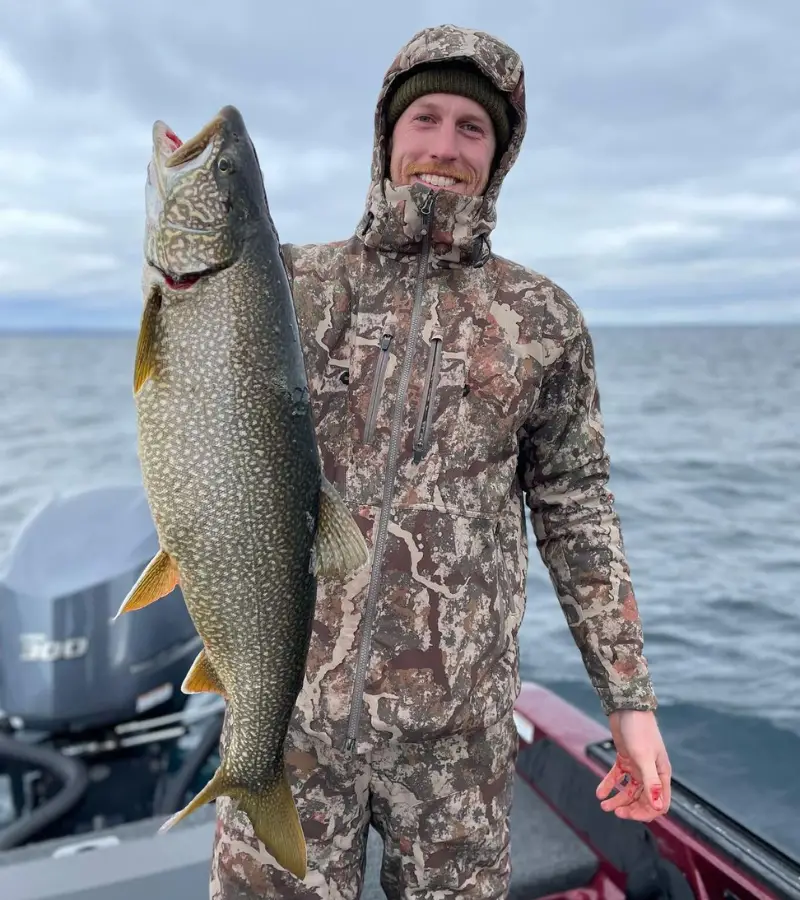Spin-n-Glo Rig 101 (Setup & How-to Guide with Pictures)
PUBLISHED 26 JULY 2023
by Robert Ceran
Are you planning to use a Spin-n-Glo rig for trolling, but aren’t sure how to set it up, or how to fish it for the best results?
While the Spin-n-Glo rig is a tried and tested setup for lake trout and salmon trolling, and has been catching fish for many years, it can be challenging to set up properly and fish correctly.
In this article I’ll walk you through how to set up a Spin-n-Glo rig, and will also discuss how to fish it to put more fish in the boat.

What is a Spin-n-Glo rig (and what is it good for)?
A Spin-n-Glo rig is a trolling setup that makes use of a rotating Spin-n-Glo bobber rigged in front of a treble hook. Spin-n-Glo bobbers are brightly colored and have two wings attached to their sides, causing them to rotate rapidly when pulled through the water.

In my experience, the bright colors and spinning action of a Spin-n-Glo Bobber function as an effective attractor, triggering strikes from fish when trolling for salmon, lake trout, steelhead, or walleye.
Another advantage of this setup is that the Spin-n-Glo bobber floats in the water, and if you troll it close to the bottom with a 3 way rig, its buoyancy will automatically keep it slightly above the bottom, which is the prime strike zone for many fish.
Spin-n-Glo rig components
You’ll need the following tackle components to set up a Spin-n-Glo rig:
- Spin-n-Glo bobber
- Plastic beads
- 3 way swivel
- 20 to 30 lb test fluorocarbon leader line
- 15 lb test monofilament dropper line
- Size #2 to #4 treble hook
Note that the Spin-n-Glo rig is usually rigged onto a standard 3 way swivel rig, but you can also use it as the terminal setup on other types of trolling rigs.
The main thing to keep in mind is that you want the leader line to be about 2 to 3 feet long, to ensure the Spin–n-Glo Bobber has its optimal action in the water.
How to set up a Spin-n-Glo rig

Start by setting up a standard 3 way fishing rig by tying a 3 way swivel to your main fishing line (which is usually 50 to 70 lb test braided line). Next, tie a 8 to 12 inch dropper line to the second eye of the 3 way swivel, using 15 lb test monofilament.
The end of the dropper line is then tied to a 2 to 8 oz sinker. The dropper line is intentionally weaker than the main line, as this allows you to break it off, should the sinker get snagged on the bottom.
Next, tie a 2 to 3 foot leader line to the third eye of the swivel, using 20 to 30 lb test fluorocarbon. Then thread the leader line through a size 2 to 4 Spin-n-Glo bobber, followed by threading on 2 to 4 plastic beads.
Next, tie the end of the leader to a size 2 treble hook, and your Spin-n-Glo rig is good to go. If you’re interested in variations of this setup, you can also combine it with a salmon hoochie rig.
How to fish a Spin-n-Glo rig
A Spin-n-Glo rig is most often used for lake trout trolling, but also catches salmon, steelhead and walleye effectively.

Image source: instagram@centralcoastangling
When using this setup for lake trout trolling in shallow water under 30 feet, you can use the Spin-n-Glo setup on its own, and by increasing the size of your sinker to 10 oz, should be able to get your rig down deep enough in the water column.
However, if you need to troll deeper than about 30 feet, you’ll need to switch to trolling with lead core line, or to using a downrigger in order to get your rig deep enough in the water.
